Power Broker Week
September 21, 2004
I finally finished reading The Power Broker (TPB), Robert Caro's excellent (and long) biography of Robert Moses. Two and a half months ago, when I contemplated again starting to read this book, Hani suggested allotting four months. For those of us not chauffeured around in limousines, one impediment to reading this book is the reticence to carry a 1300-page volume for casual reading on the subway. TPB is a heftier tome than my casebook for Tax.
Not only is TPB a biography about the life of Robert Moses, but it is a biography of a city and documents the rise of urban decay in New York. Finally, TPB also offers prescriptive lessons about the separation of powers among different levels and branches of government and the importance of effective legislative oversight.
In following posts, I will look at these two other themes: how New York City has dealt with the problems of Moses's approach towards urban development and how the Bush Adminstration has effectively adopted many of Moses's strategies for creating and exploiting political power.
Today will feature some photographs I shot on Sunday of some of the things Moses "got done":
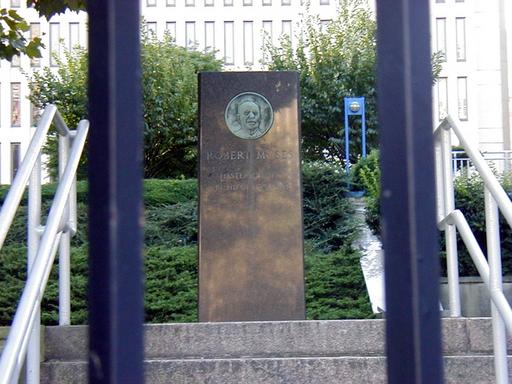
"Robert Moses, Master Builder" at Fordham's Lincoln Center campus.
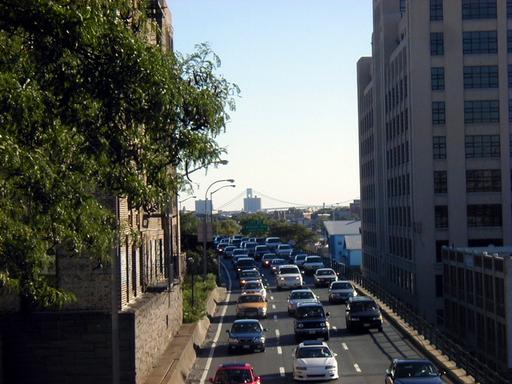
The Brooklyn-Queens Expressway (with Verrazano-Narrows Bridge in the background)
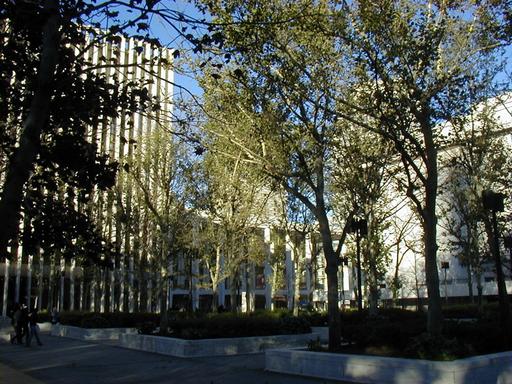
Damsrosch Park and Lincoln Center
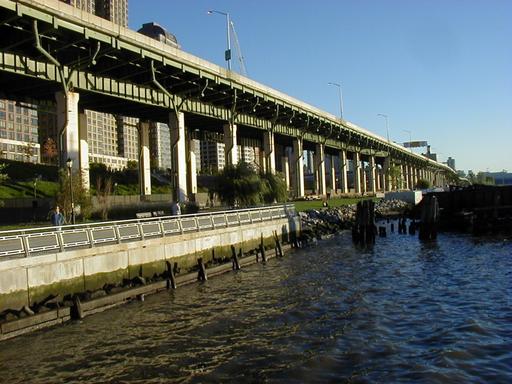
Elevated section of the West Side Highway
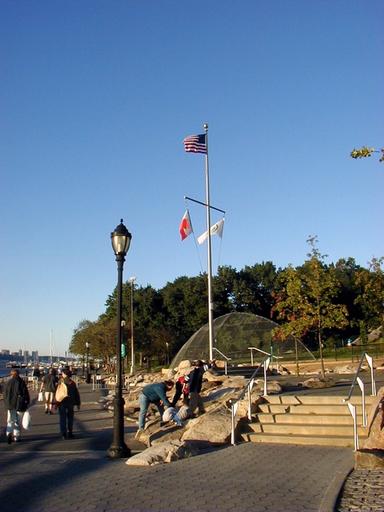
Riverside Park. Those are the Parks Department and state flags below the US flag.
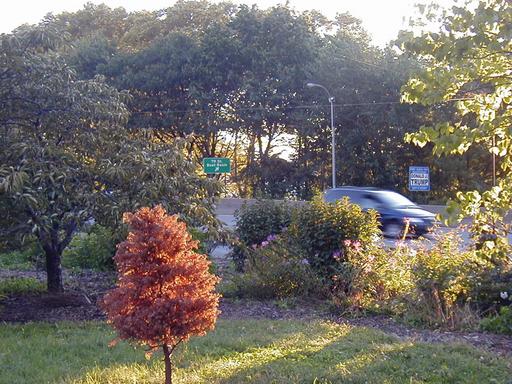
West Side Highway and Riverside Park
To be a comprehensive look at Moses's projects wihin the city, a photo shoot would also have to include the Triborough, Bronx-Whitestone, Henry Hudson, Throgs Neck and Marine Parkway bridges, the Belt Parkway, Gowanus Expressway, Cross Bronx, Van Wyck, Grand Central, hundreds of parks and playgrounds, massive housing projects, and Shea Stadium. A photographer would have to travel to Long Island to visit its parks, which include Jones Beach and Bethpage, as well as the Long Island Expressway and Northern and Southern State Parkways. Upstate, Moses developed even more parks, parkways and hydroelectric power dams.
Discounting the ultimate effectiveness of these public works (which I will explore tomorrow), it certainly is an impressive resume.
Posted by Andrew Raff at September 21, 2004 01:05 PMThe first picture of Riverside Park is actually the extension that's been built in the last few years, not part of the original park that goes from 72nd on up (originally designed in the 19th century and altered by Moses).
Also, didn't he create the Brooklyn Heights promenade (should be easy to get a snapshot of that)?
Posted by: Krikor Daglian on September 21, 2004 04:17 PMMy original intention was to get a photo of the 79th st. Boat Basin/West Side Highway exit structure, but the shot of the flag pole just south of 72nd st turned out better (although when I first framed the shot, the state and parks flags were more visible.)
I am not certain if Moses built the Brooklyn Heights promenade, but I can't believe that he would have built the BQE there without a provision for a park, especially one in a wealthy neighborhood. I did take some photos at the promenade, but only decided to use the one of traffic on the BQE.
Posted by: Andrew on September 21, 2004 05:15 PMIf you make it out to Flushing Meadows, there's a brilliant mosaic of RM just outside the USTA Center. He's permanently memorialized flashing an absolutely demonic grin on the pavement.
Posted by: hK on September 23, 2004 11:54 PMWas that a comment on Moses?
Posted by: Krikor Daglian on September 27, 2004 09:40 PMThat [now deleted comment above Krikor's] looks like a comment spam I didn't catch. Since it didn't have a connection to Moses that I could figure out, it's gone.
Posted by: Andrew on September 27, 2004 09:49 PM